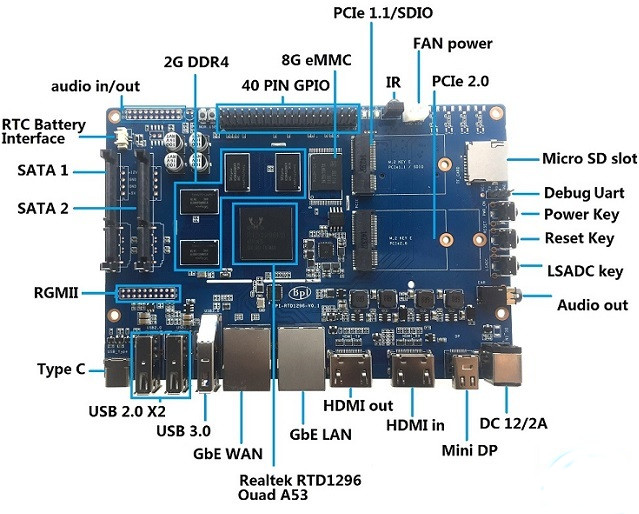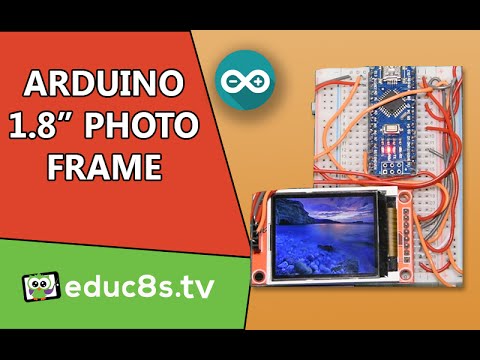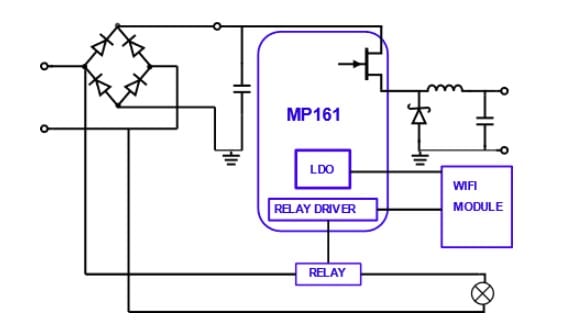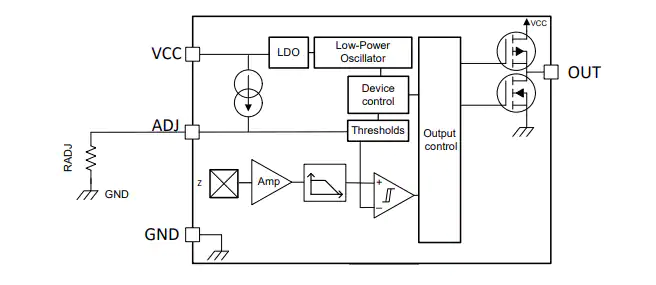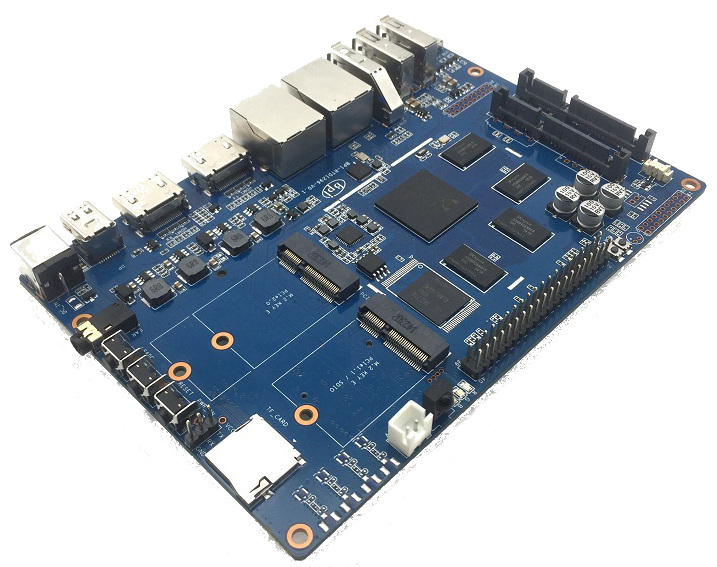
Banana Pi BPI-W2 – A Multimedia Powerhouse SBC for Media, Storage, and Networking Applications
SinoVoIP, the makers of the DIY Raspberry Pi lookalike board, the BananaPi has unveiled a new maker board designed for media, storage, and networking applications called the Banana Pi BPI-W2. The Banana Pi BPI-W2 is based on the Realtek RTD1296 processor. Recently, Realtek worked on the first RTD1296 processor with extra Gigabit Ethernet, SATA interfaces and USB 3.0. The Realtek RTD1296 is a high-end processor which already powers some Android TV Boxes like the Zidoo X9S and some others but there is little adoption in the general maker’s ecosystem. SinoVoIP is hoping to bring the powerful Realtek processor to the maker’s world with the introduction of the BananaPi BPI-W2 which is a friendly maker’s board.
BananaPi BPI-W2 is going to be SinoVoIP’s fourth board so far and comes with some improved features and modifications. The board integrates a Realtek RTD1296 SoC with 4x Cortex-A53 cores clocked at up to 1.5GHz with a high-end Mali-T820 MP3 GPU. It also incorporates dual GbE ports and a GbE WAN Port for router applications. It includes a variety of peripherals, including an HDMI input in addition to the HDMI output, and a mini-DisplayPort. A single PCIe2.0, PCIe1.1 & SDIO, M.2 interface, USB 2.0, USB 3.0 Port, SATA port, the WAN port provides support for 802.11ac/n WLAN connection through PCI-e port. From this onboard features, it is obvious the board is designed for media, storage, and networking applications.
Just like other Banana Pi boards in the past, the BananaPi BPI-W2 provides support for popular Raspberry Pi add-on boards through a 40-pin header. Some of its other features include an RTC, IR, debug, audio I/O, and a 12V input.
BananaPi BPI – W2 is expected to work with Android 6.0 and 7.0 as well as multiple OS such as Open WRT, Debian, Linux, Ubuntu Linux and many more. The router can be used for home entertainment, high wireless performance, automation of a building and so on.
Below are some of the specifications of the BananaPi BPI-W2 board:
- SoC – Realtek RTD1296 quad-core Cortex A53 processor with ARM Mali-T820 MP3 GPU
- System Memory – 2GB DDR4 RAM
- Storage – 8GB eMMC flash (optional 16, 32 or 64GB), 2x SATA 3.0 interfaces, micro SD slot up to 256GB
- Video
- Output – HDMI 2.0a up to 4K @ 60 Hz, mini DP
- Input – HDMI 2.0 input up to 1080p60
- Playback – HDR, 10-bit HEVC/H.265 up to 4K @ 60fps, H.264 up to 4K @ 24 fps, VP9 up to 4K @ 30 fps, BDISO/MKV, etc…
- Audio I/O – HDMI, mini DP, 3.5mm audio jack
- Connectivity
- 2x Gigabit Ethernet
- SIM card slot (requires mPCIe modem)
- USB – 1x USB 3.0, 2x USB 2.0 ports, USB type C interface (still no idea if video and power are supported)
- Expansions
- 1x M.2 Key E “PCIe 1.1/SDIO” slot
- 1x M.2 Key E “PCIe 2.0” slot
- 40-pin “Raspberry Pi” GPIO header
- Debugging – 3-pin UART connector
- Misc – Power, reset and LSADC keys; RTC battery connector; IR receiver; fan header
- Power Supply – 12V /2A via power barrel connector
- Dimensions – 148 x 100.5 mm (same as Banana Pi R2 board)
Banana Pi BPI-W2 SBC is billed as open source, and should eventually ship with schematics and other documentation. The board is available and can be purchased for $93 on Aliexpress. More information about the board can be found here.





